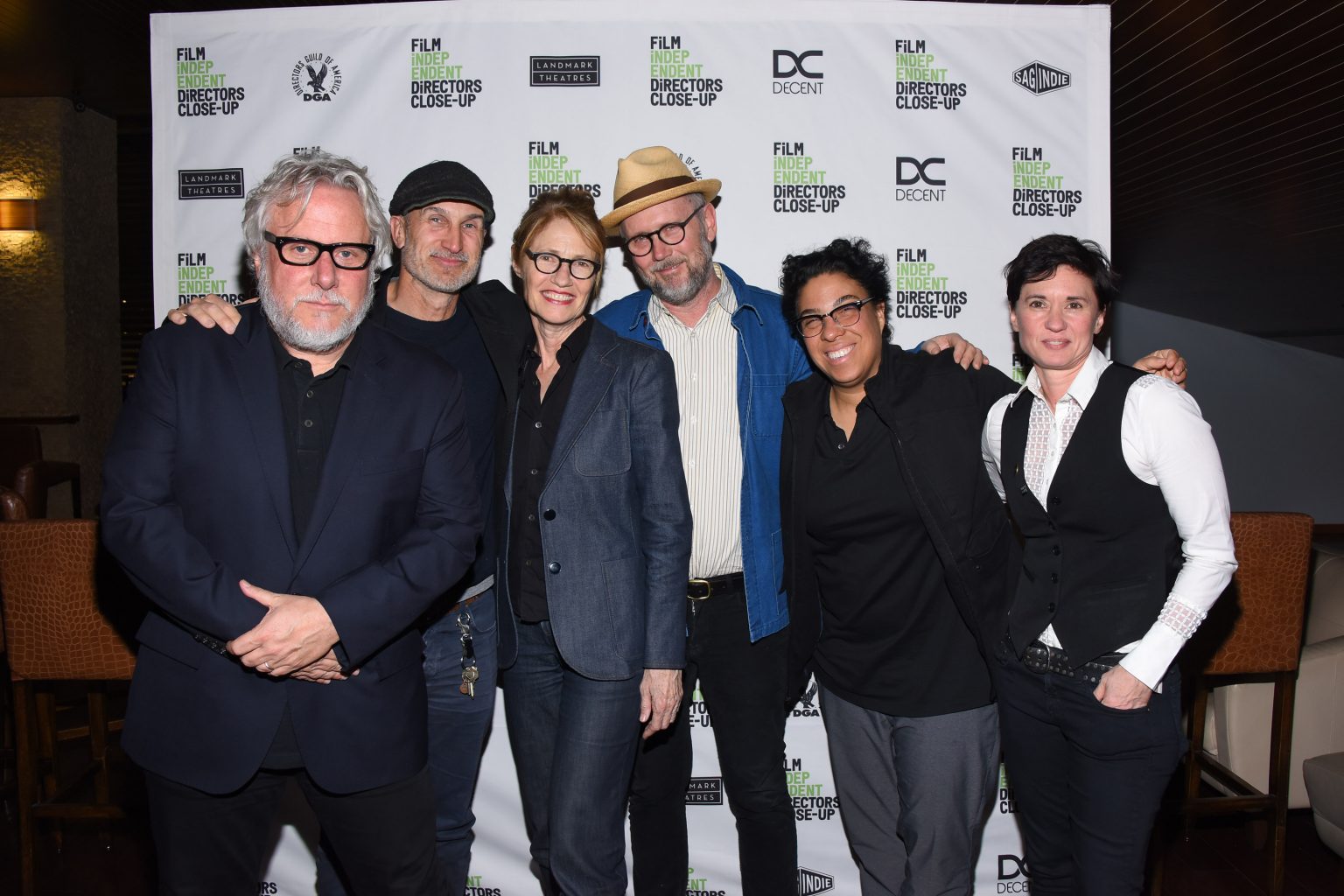Green Book: An Unlikely Bi-Racial Friendship In the 60s Deep South
Friday, November 23rd, 2018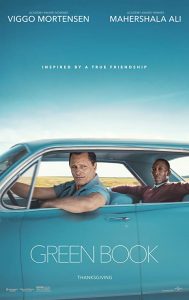 Dr. Don Shirley is a world-class African-American pianist who’s about to embark on a concert tour in the Deep South in 1962. In need of a driver and protection, Shirley recruits Tony Lip, a tough-talking bouncer from an Italian-American neighborhood in the Bronx. Despite their differences, the two men soon develop an unexpected bond while confronting racism and danger in an era of segregation. KIDS FIRST! Reviewer Kimbirly O. comments, “American History is often not pretty. When it comes to Green Book, it is purely ugly and lovingly told. From the stereotypical Italian-American neighborhood of the Bronx in New York, to the Deep South during the 60s, this film is based on a true story of unlikely friends. See her full review below.
Dr. Don Shirley is a world-class African-American pianist who’s about to embark on a concert tour in the Deep South in 1962. In need of a driver and protection, Shirley recruits Tony Lip, a tough-talking bouncer from an Italian-American neighborhood in the Bronx. Despite their differences, the two men soon develop an unexpected bond while confronting racism and danger in an era of segregation. KIDS FIRST! Reviewer Kimbirly O. comments, “American History is often not pretty. When it comes to Green Book, it is purely ugly and lovingly told. From the stereotypical Italian-American neighborhood of the Bronx in New York, to the Deep South during the 60s, this film is based on a true story of unlikely friends. See her full review below.
Green Book
By Kimbirly O., KIDS FIRST! Adult Juror
American History is often not pretty. When it comes to Green Book, it is purely ugly and lovingly told. From the stereotypical Italian-American neighborhood of the Bronx in New York, to the Deep South during the 60s, this film is based on a true story of unlikely friends. Tony “Lip” Vallelonga (Viggo Mortenson) is a working-class Italian-American bouncer and sometimes “assistant” within the mob, who becomes the driver of an African-American classical pianist, Dr. Don Shirley (Mahershala Ali), on a tour of venues through the 1960s American south. A classically trained virtuosic pianist, Dr. Shirley embarks on a journey to play for the wealthy throughout the south – the same people who will not eat with him, nor share a restroom, among other things. The title of the film refers to the Negro Motorist Green Book, a travel book Tony and Shirley follow to guide them to “approved” hotels and restaurants during their travels. Dr. Shirley’s journey to and through the south is truly more than a drive of a thousand miles; it is a road to self-discovery for both men.
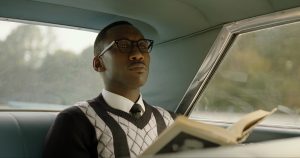 Tony “Lip”, not Tony the Lip, mind you, is a family man. He, like his father before him, is a hard-working proud Italian man, who lives in the same neighborhood as the generations who came before him. He is married (his wife is played by Linda Cardellini)) and they have two sons. He prides himself on being a “bullshit artist.” When he loses his job, he is recruited to serve as the driver to a renowned pianist, who just so happens to be African-American. Dr. Shirley, on the other hand, is estranged from his family and searching. The two men are cast perfectly and bring the best both offer and then some. There are some very touching scenes within this film.
Tony “Lip”, not Tony the Lip, mind you, is a family man. He, like his father before him, is a hard-working proud Italian man, who lives in the same neighborhood as the generations who came before him. He is married (his wife is played by Linda Cardellini)) and they have two sons. He prides himself on being a “bullshit artist.” When he loses his job, he is recruited to serve as the driver to a renowned pianist, who just so happens to be African-American. Dr. Shirley, on the other hand, is estranged from his family and searching. The two men are cast perfectly and bring the best both offer and then some. There are some very touching scenes within this film.
I will not dwell on the ra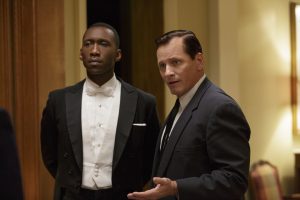 cial stereotypes prevalent throughout the film, instead I will focus on the unlikely friendship, which continued throughout the lives of both men. This film is based on a true story. It is co-written by Nick Vallelonga (Tony’s son), Bryan Currie and Peter Farrelly, who is best known for films written with his brother Bobby and more sophomoric in nature (i.e. Dumb and Dumber). Peter Farrelly also directs the film.
cial stereotypes prevalent throughout the film, instead I will focus on the unlikely friendship, which continued throughout the lives of both men. This film is based on a true story. It is co-written by Nick Vallelonga (Tony’s son), Bryan Currie and Peter Farrelly, who is best known for films written with his brother Bobby and more sophomoric in nature (i.e. Dumb and Dumber). Peter Farrelly also directs the film.
Awards buzz – 18 wins thus far and the major film awards have not yet begun. This film has been the darling of 2018 film festivals with many audience wins. History shows us how The Academy loves true stories. I am looking for several names from this film on January 22.
 I give this film 4.5 out of 5 stars and recommend it for ages 12 to 18, as well as adults. There is a LOT of smoking, I mean SO MUCH SMOKING. It takes place in the 60s and everyone seems to smoke. There is also a lot of drinking in the film. Racism is prevalent throughout as it takes place in the Deep South where people were referred to as “colored” and segregated. There is also a brief scene, which intimates a sexual encounter between two men, although there is no true nudity. This film opens in theaters nationwide November 16, 2018. See it! Stay for the credits.
I give this film 4.5 out of 5 stars and recommend it for ages 12 to 18, as well as adults. There is a LOT of smoking, I mean SO MUCH SMOKING. It takes place in the 60s and everyone seems to smoke. There is also a lot of drinking in the film. Racism is prevalent throughout as it takes place in the Deep South where people were referred to as “colored” and segregated. There is also a brief scene, which intimates a sexual encounter between two men, although there is no true nudity. This film opens in theaters nationwide November 16, 2018. See it! Stay for the credits.
Photos by Universal Pictures - ©2018 Universal Pictures. All Rights Reserved
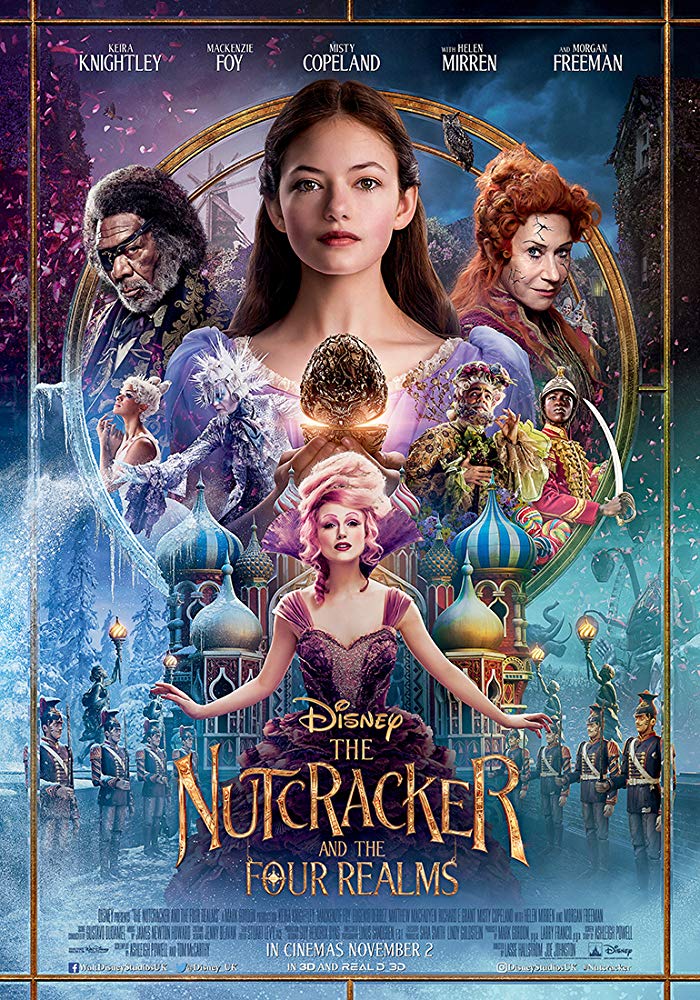 All Clara wants is a key – a one-of-a-kind key that will unlock a box that holds a priceless gift from her late mother. A golden thread, presented to her at godfather Drosselmeyer’s annual holiday party, leads her to the coveted key-which promptly disappears into a strange and mysterious parallel world. It’s there that Clara encounters a soldier named Phillip, a gang of mice and the regents who preside over three Realms: Land of Snowflakes, Land of Flowers, and Land of Sweets. Clara and Phillip must brave the ominous Fourth Realm, home to the tyrant Mother Ginger, to retrieve Clara’s key and hopefully return harmony to the unstable world. Kimbirly O., KIDS FIRST! Juror comments, “From the beginning of the film, your senses will be ALIVE! Every set looks edible with color and life. Truly, this live-action Disney film is a breath of fresh air.” See her full review below.
All Clara wants is a key – a one-of-a-kind key that will unlock a box that holds a priceless gift from her late mother. A golden thread, presented to her at godfather Drosselmeyer’s annual holiday party, leads her to the coveted key-which promptly disappears into a strange and mysterious parallel world. It’s there that Clara encounters a soldier named Phillip, a gang of mice and the regents who preside over three Realms: Land of Snowflakes, Land of Flowers, and Land of Sweets. Clara and Phillip must brave the ominous Fourth Realm, home to the tyrant Mother Ginger, to retrieve Clara’s key and hopefully return harmony to the unstable world. Kimbirly O., KIDS FIRST! Juror comments, “From the beginning of the film, your senses will be ALIVE! Every set looks edible with color and life. Truly, this live-action Disney film is a breath of fresh air.” See her full review below.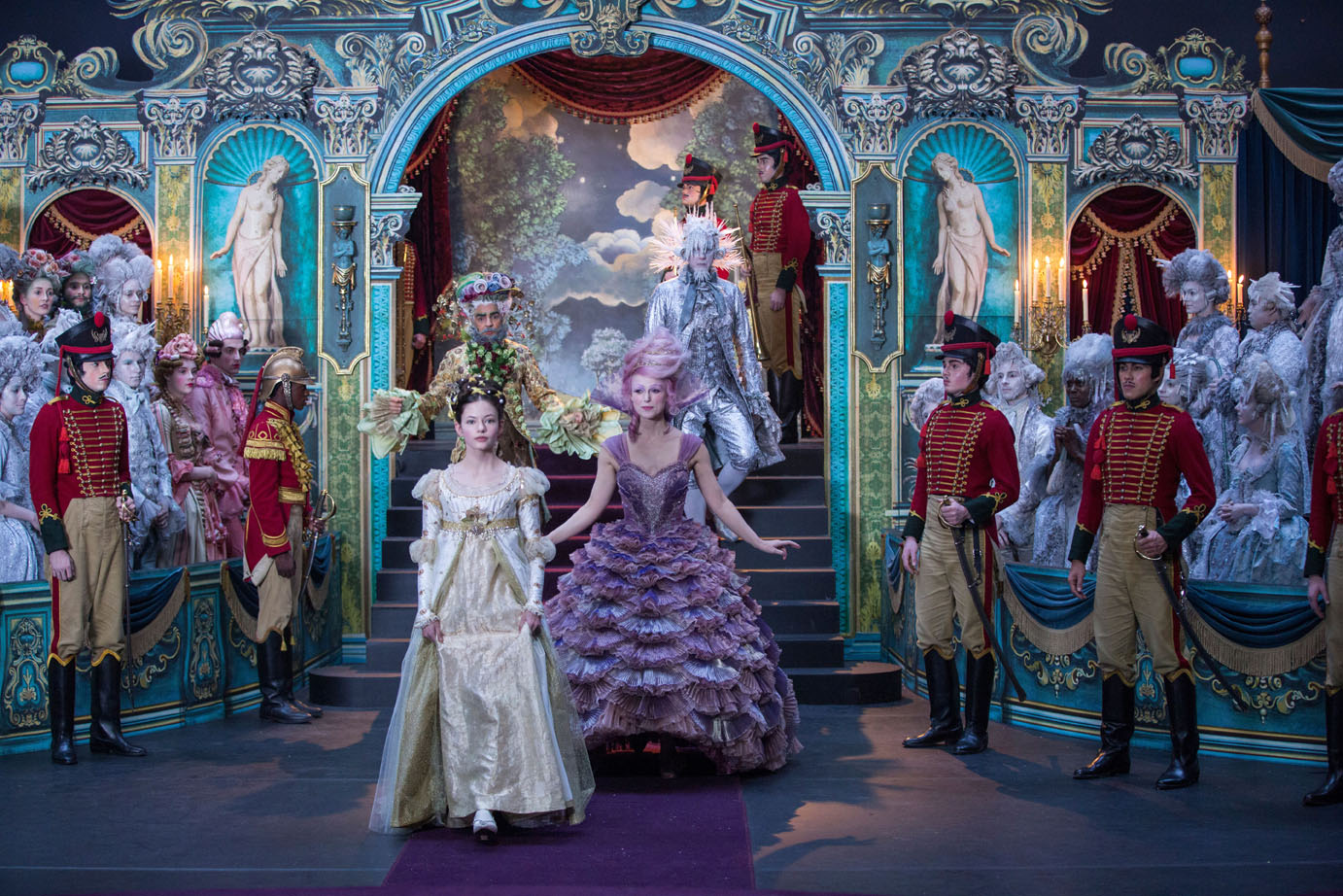
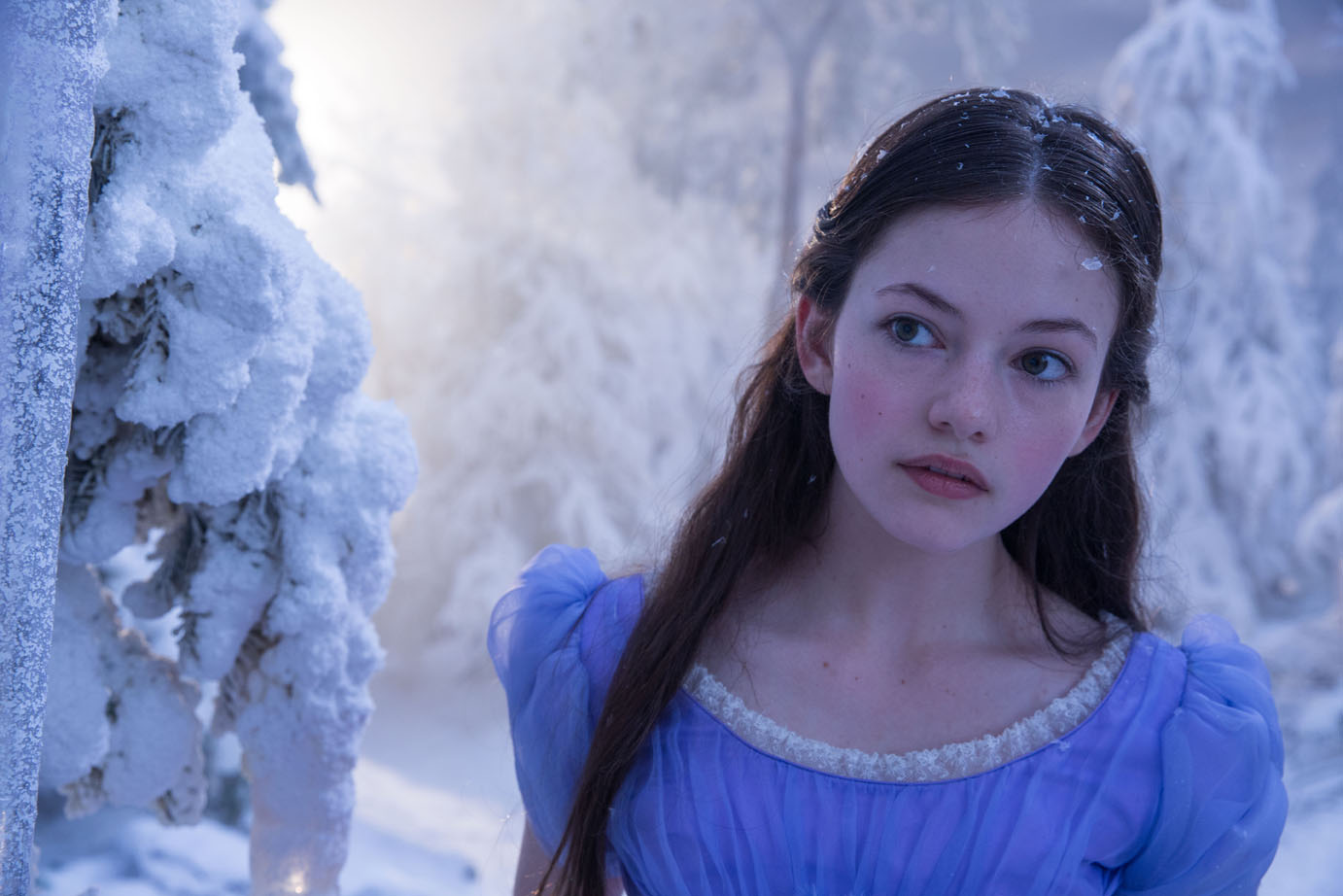
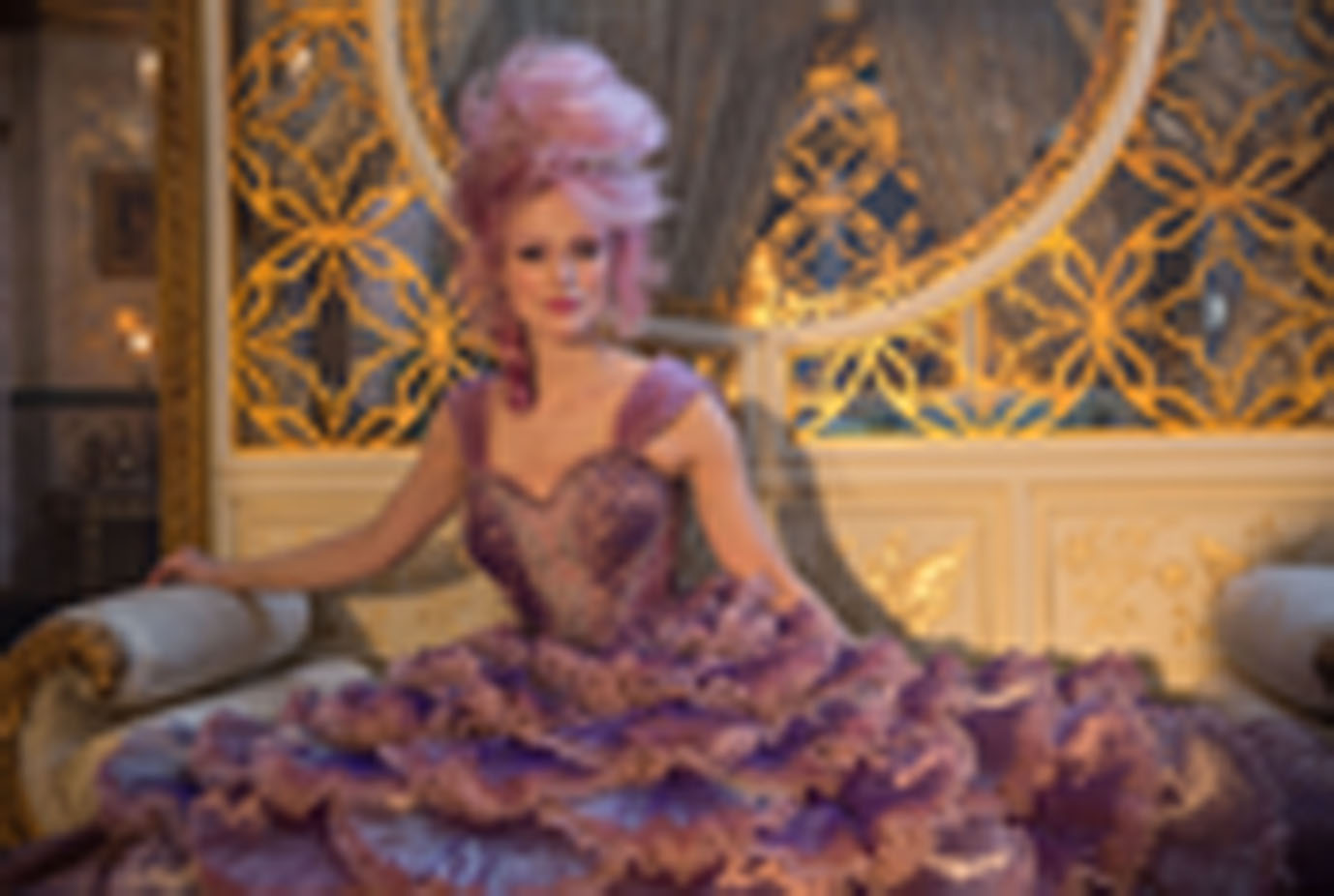 and mysterious parallel world. From one world to the next, Land of Snowflakes, Land of Flowers and Land of Sweets, Clara and a soldier she meets named Phillip (Jayden Fowora-Knight) must brave the ominous Fourth Realm, home to the tyrant Mother Ginger (Helen Mirren), to retrieve Clara’s key.
and mysterious parallel world. From one world to the next, Land of Snowflakes, Land of Flowers and Land of Sweets, Clara and a soldier she meets named Phillip (Jayden Fowora-Knight) must brave the ominous Fourth Realm, home to the tyrant Mother Ginger (Helen Mirren), to retrieve Clara’s key.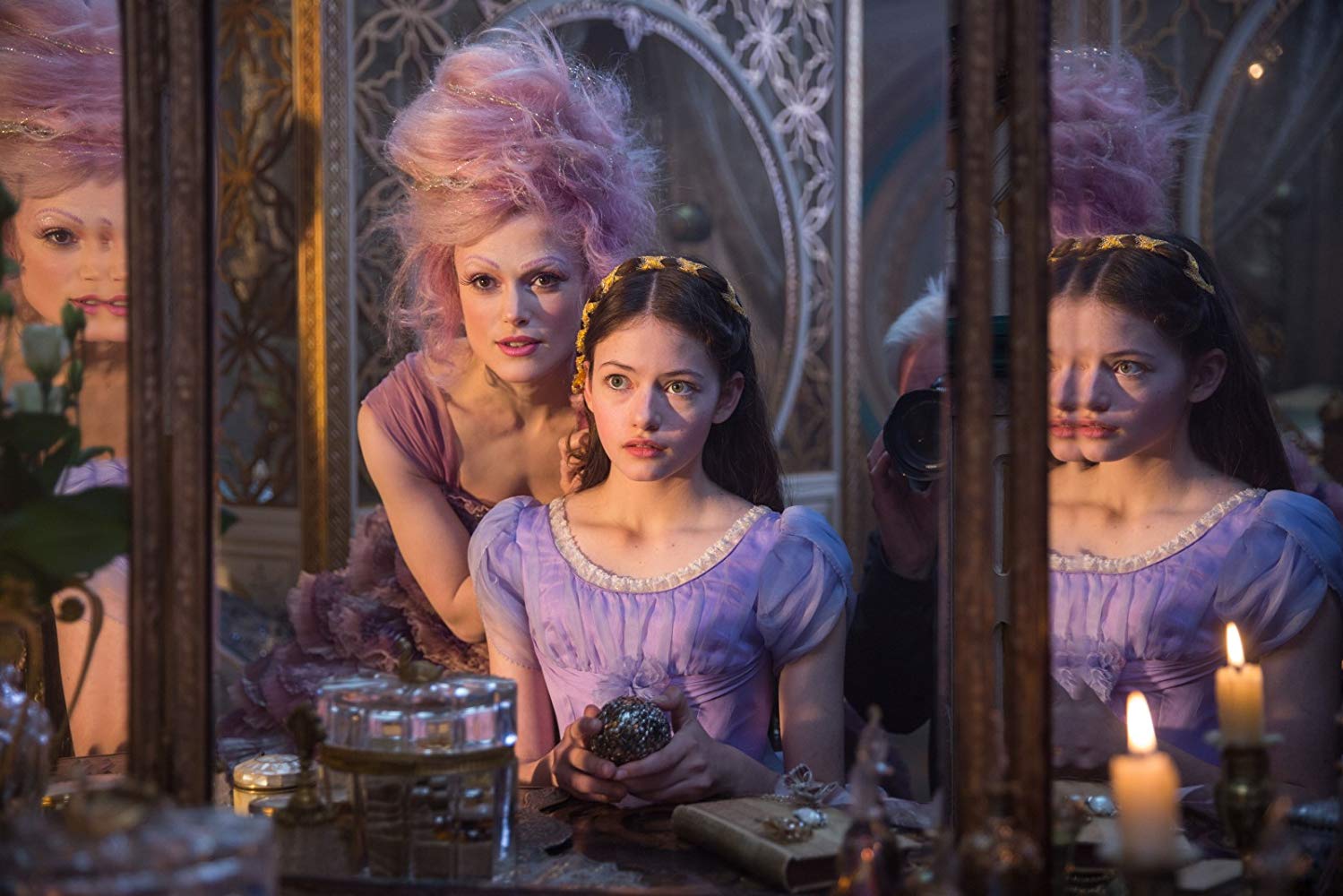 5 stars and recommend it for ages 4 to 18, as well as adults. You should know this film deals with the death of a parent. It opens in theaters nationwide November 2, 2018. Look for it! You’ll be glad you did.
5 stars and recommend it for ages 4 to 18, as well as adults. You should know this film deals with the death of a parent. It opens in theaters nationwide November 2, 2018. Look for it! You’ll be glad you did.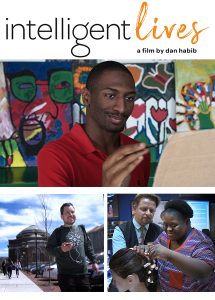 From award-winning filmmaker Dan Habib comes Intelligent Lives, a catalyst to transform the label of intellectual disability from a life sentence of isolation into a life of possibility for the most systematically segregated people in America. Intelligent Lives stars three pioneering young American adults with intellectual disabilities – Micah, Naieer, and Naomie – who challenge perceptions of intelligence as they navigate high school, college, and the workforce. Academy Award-winning actor and narrator Chris Cooper contextualizes the lives of these central characters through the emotional personal story of his son Jesse, as the film unpacks the shameful and ongoing track record of intelligence testing in the U.S. Intelligent Lives challenges what it means to be intelligent, and points to a future in which people of all abilities can fully participate in higher education, meaningful employment and intimate relationships.
From award-winning filmmaker Dan Habib comes Intelligent Lives, a catalyst to transform the label of intellectual disability from a life sentence of isolation into a life of possibility for the most systematically segregated people in America. Intelligent Lives stars three pioneering young American adults with intellectual disabilities – Micah, Naieer, and Naomie – who challenge perceptions of intelligence as they navigate high school, college, and the workforce. Academy Award-winning actor and narrator Chris Cooper contextualizes the lives of these central characters through the emotional personal story of his son Jesse, as the film unpacks the shameful and ongoing track record of intelligence testing in the U.S. Intelligent Lives challenges what it means to be intelligent, and points to a future in which people of all abilities can fully participate in higher education, meaningful employment and intimate relationships. of determination to contribute to society regardless of the label of “intellectual disability”. We follow three young adults through their personal journeys to make a life for themselves. They had me rooting for them throughout the entire film. I admire their chutzpah and determination.
of determination to contribute to society regardless of the label of “intellectual disability”. We follow three young adults through their personal journeys to make a life for themselves. They had me rooting for them throughout the entire film. I admire their chutzpah and determination. bility once known as “mentally retarded” into a life of possibility. We watch Naieer, Micah and Naomie as they work through high school, college and the workforce to accomplish their goals. Micah, born in 1984, is determined to succeed. He goes to Syracuse University and graduates with a certificate from the school of education to become a teaching assistant. He gives us a new outlook and perspective on someone with an IQ of 40, being quite savvy with social media. He is a constant reminder not to underestimate what people can do. After college, he learns to live on his own and becomes close with a fellow classmate, Meghan and helps her to advocate for herself.
bility once known as “mentally retarded” into a life of possibility. We watch Naieer, Micah and Naomie as they work through high school, college and the workforce to accomplish their goals. Micah, born in 1984, is determined to succeed. He goes to Syracuse University and graduates with a certificate from the school of education to become a teaching assistant. He gives us a new outlook and perspective on someone with an IQ of 40, being quite savvy with social media. He is a constant reminder not to underestimate what people can do. After college, he learns to live on his own and becomes close with a fellow classmate, Meghan and helps her to advocate for herself. Naieer, born in 1999, has a great talent for art, takes general education in inclusion classes, and is a great basketball player at a public high school in Massachusetts. Through the Art for Cultural Inclusion show, he creates six wonderful paintings. Naomie is 25, loves to sing and dance at her church in Rhode Island with her hip-hop producer brother, and works toward and gets her first paying job through a job training program at a hair salon.
Naieer, born in 1999, has a great talent for art, takes general education in inclusion classes, and is a great basketball player at a public high school in Massachusetts. Through the Art for Cultural Inclusion show, he creates six wonderful paintings. Naomie is 25, loves to sing and dance at her church in Rhode Island with her hip-hop producer brother, and works toward and gets her first paying job through a job training program at a hair salon. per and his wife Marianne as they share the connection to the film and tell us about their son Jesse, whose intelligence has been questioned because he has cerebral palsy. Jesse however, became a high school honor student and a poet, before his death at age 17.
per and his wife Marianne as they share the connection to the film and tell us about their son Jesse, whose intelligence has been questioned because he has cerebral palsy. Jesse however, became a high school honor student and a poet, before his death at age 17.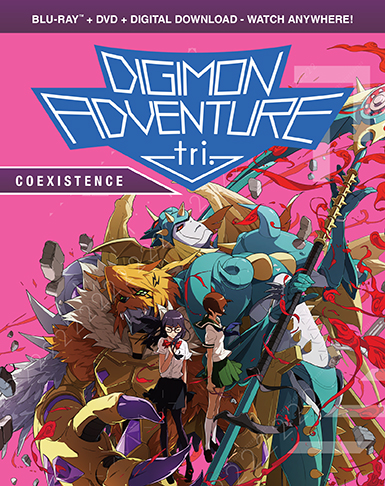 The Adventure Continues…The arrival of the super powerful Meicoomon starts a countdown to the real world’s collapse. The DigiDestined are cast out of the Digital World, and even after returning to the real world, are driven away by people, due to their partnerships with the Digimon. Meanwhile, a cruel fate appears imminent for Kari, who has a more honest and sensitive spirit than anyone. KIDS FIRST! Adult Juror Kimbirly M. comments, “With the well-known Japanese anime style, Digimon-tri has sharp-edge graphics and action sequences that draw the viewers in.” See the rest of her review below.
The Adventure Continues…The arrival of the super powerful Meicoomon starts a countdown to the real world’s collapse. The DigiDestined are cast out of the Digital World, and even after returning to the real world, are driven away by people, due to their partnerships with the Digimon. Meanwhile, a cruel fate appears imminent for Kari, who has a more honest and sensitive spirit than anyone. KIDS FIRST! Adult Juror Kimbirly M. comments, “With the well-known Japanese anime style, Digimon-tri has sharp-edge graphics and action sequences that draw the viewers in.” See the rest of her review below.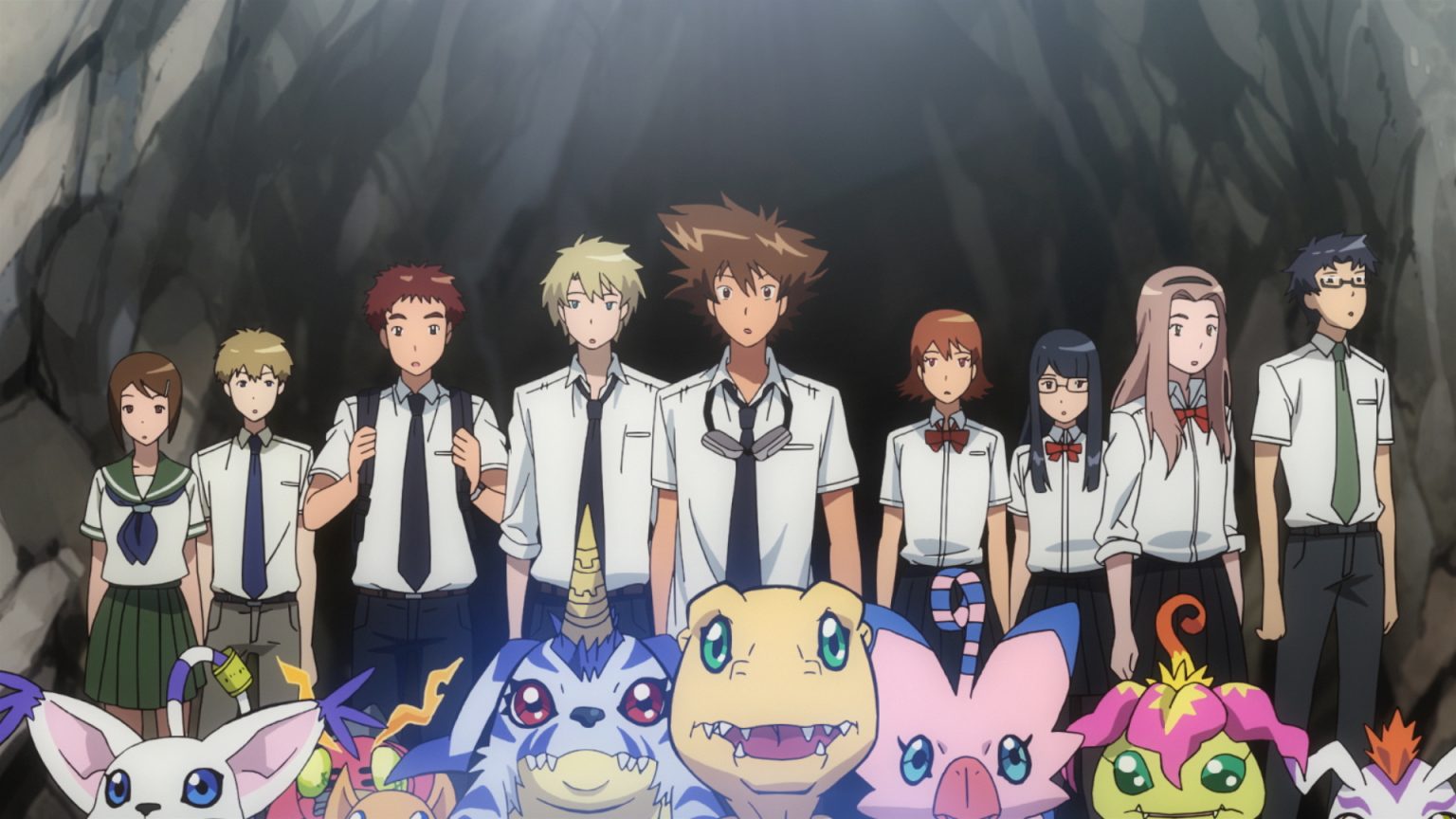 This is a continuation of the popular Digimon-tri series. The storyline, generally about dark forces taking over, flows well. There are no lagging sequences that would bore the viewer. One becomes empathetic with the protagonist Kari and even the evil force overtaking Meicoomon. The vocabulary and concepts are appropriate for its intended age group and could further enhance vocabulary and concepts that the viewer may not understand. It portrays pro-
This is a continuation of the popular Digimon-tri series. The storyline, generally about dark forces taking over, flows well. There are no lagging sequences that would bore the viewer. One becomes empathetic with the protagonist Kari and even the evil force overtaking Meicoomon. The vocabulary and concepts are appropriate for its intended age group and could further enhance vocabulary and concepts that the viewer may not understand. It portrays pro- social models such as when Kari feels that she might be responsible for a specific situation and one of the others reassures her that this definitely isn’t the case. This entire series is very good at displaying consequences of both negative and positive behaviors. There are also good models of problem solving such as when a Digimon character decides on an action and another vehemently opposes it. The rest of the group has to come to a general consensus to make a final determination.
social models such as when Kari feels that she might be responsible for a specific situation and one of the others reassures her that this definitely isn’t the case. This entire series is very good at displaying consequences of both negative and positive behaviors. There are also good models of problem solving such as when a Digimon character decides on an action and another vehemently opposes it. The rest of the group has to come to a general consensus to make a final determination. s. Life has complicated challenges, but you can overcome them. You should be aware that there are two things that make this more appropriate for older viewers. First, a character pulls out a gun, but there is no blast. And second, we see a powerful being shaped like a naked woman, although there are no graphic features. For that reason, I recommend it for ages 10 to 18, as well as young adults and give it 4 out of 5 stars. I would raise the highest age to 25 if I could, because it is so thought-provoking and intelligent. The DVD allows you to select specific scenes and has a bonus feature interview. Reviewed by Kimberly M., KIDS FIRST! Adult Reviewer
s. Life has complicated challenges, but you can overcome them. You should be aware that there are two things that make this more appropriate for older viewers. First, a character pulls out a gun, but there is no blast. And second, we see a powerful being shaped like a naked woman, although there are no graphic features. For that reason, I recommend it for ages 10 to 18, as well as young adults and give it 4 out of 5 stars. I would raise the highest age to 25 if I could, because it is so thought-provoking and intelligent. The DVD allows you to select specific scenes and has a bonus feature interview. Reviewed by Kimberly M., KIDS FIRST! Adult Reviewer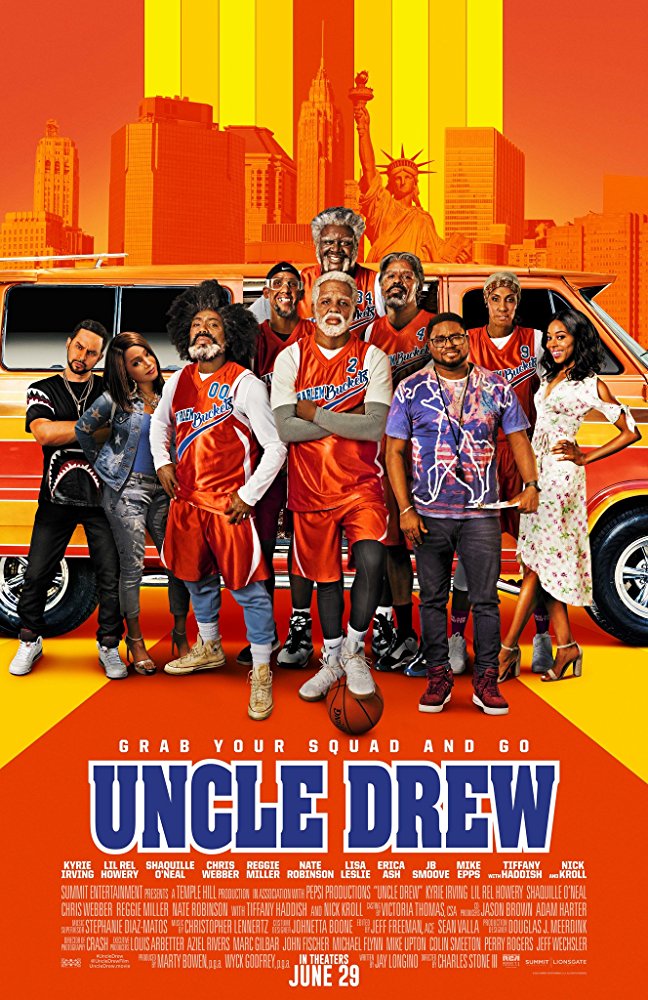 After draining his life savings to enter a team in the Rucker Classic street ball tournament in Harlem, Dax (Lil Rel Howery) is dealt a series of unfortunate setbacks, including losing his team to his longtime rival (Nick Kroll). Desperate to win the tournament and the cash prize, Dax stumbles upon the man, the myth, the legend Uncle Drew (NBA All-Star Kyrie Irving) and convinces him to return to the court one more time. The two men embark on a road trip to round up Drew’s old basketball squad (Shaquille O’Neal, Chris Webber, Reggie Miller, Nate Robinson and Lisa Leslie) and prove that a group of septuagenarians can still win the big one. After a successful five years as a fan-favorite digital episodic series, originally conceived by Pepsi, Uncle Drew, will hit theaters June 29, 2018. KIDS FIRST! Juror, Juanita L. comments, “Uncle Drew has strong messages about team work, taking risks to reach your goals and playing for the love of the game.” See her full review below.
After draining his life savings to enter a team in the Rucker Classic street ball tournament in Harlem, Dax (Lil Rel Howery) is dealt a series of unfortunate setbacks, including losing his team to his longtime rival (Nick Kroll). Desperate to win the tournament and the cash prize, Dax stumbles upon the man, the myth, the legend Uncle Drew (NBA All-Star Kyrie Irving) and convinces him to return to the court one more time. The two men embark on a road trip to round up Drew’s old basketball squad (Shaquille O’Neal, Chris Webber, Reggie Miller, Nate Robinson and Lisa Leslie) and prove that a group of septuagenarians can still win the big one. After a successful five years as a fan-favorite digital episodic series, originally conceived by Pepsi, Uncle Drew, will hit theaters June 29, 2018. KIDS FIRST! Juror, Juanita L. comments, “Uncle Drew has strong messages about team work, taking risks to reach your goals and playing for the love of the game.” See her full review below.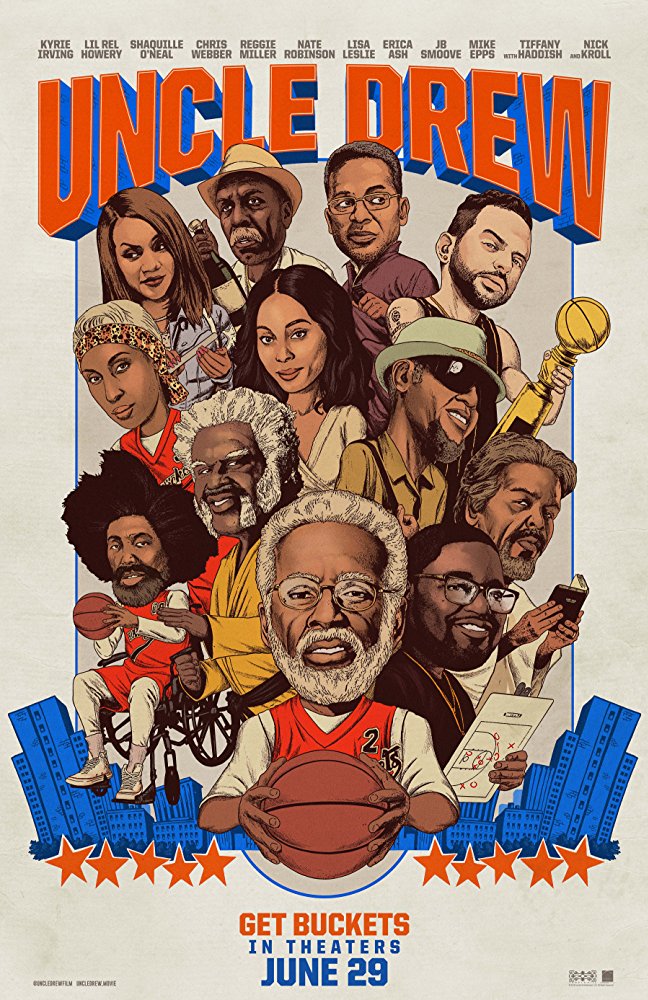 ry, KIDS FIRST! Adult Juror
ry, KIDS FIRST! Adult Juror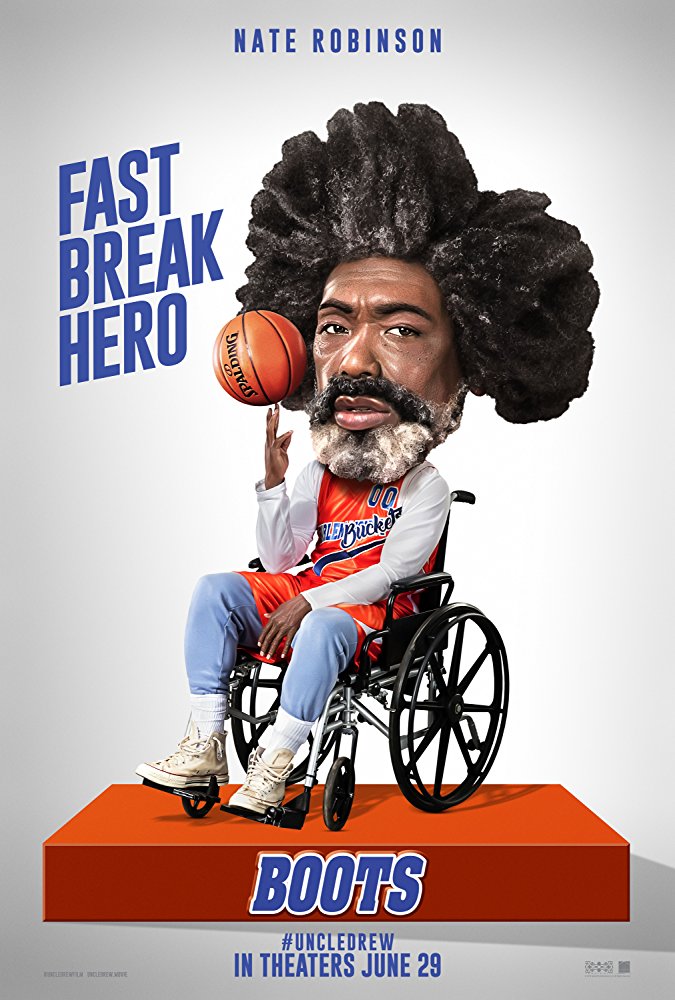 n entry fee and is desperate to get another team when he learns from Louis (Mike Epps) and Angelo (J.B. Smoove) about the legendary street player Uncle Drew. Dax finds 70-something Uncle Drew (NBA all Star Kyrie Irving), a street-ball legend who famously played in the same tournament 50 years earlier. Uncle Drew agrees to play for Dax if he can recruit his own roster of players. The adventure begins as the duo road trips to convince Drew’s old teammates to join the team. We see Preacher (Chris Webber), wheel-chair bound Boots (Nate Robinson), Big Fella (Shaquille O’Neil and legally blind Lights (Reggie Miller).
n entry fee and is desperate to get another team when he learns from Louis (Mike Epps) and Angelo (J.B. Smoove) about the legendary street player Uncle Drew. Dax finds 70-something Uncle Drew (NBA all Star Kyrie Irving), a street-ball legend who famously played in the same tournament 50 years earlier. Uncle Drew agrees to play for Dax if he can recruit his own roster of players. The adventure begins as the duo road trips to convince Drew’s old teammates to join the team. We see Preacher (Chris Webber), wheel-chair bound Boots (Nate Robinson), Big Fella (Shaquille O’Neil and legally blind Lights (Reggie Miller).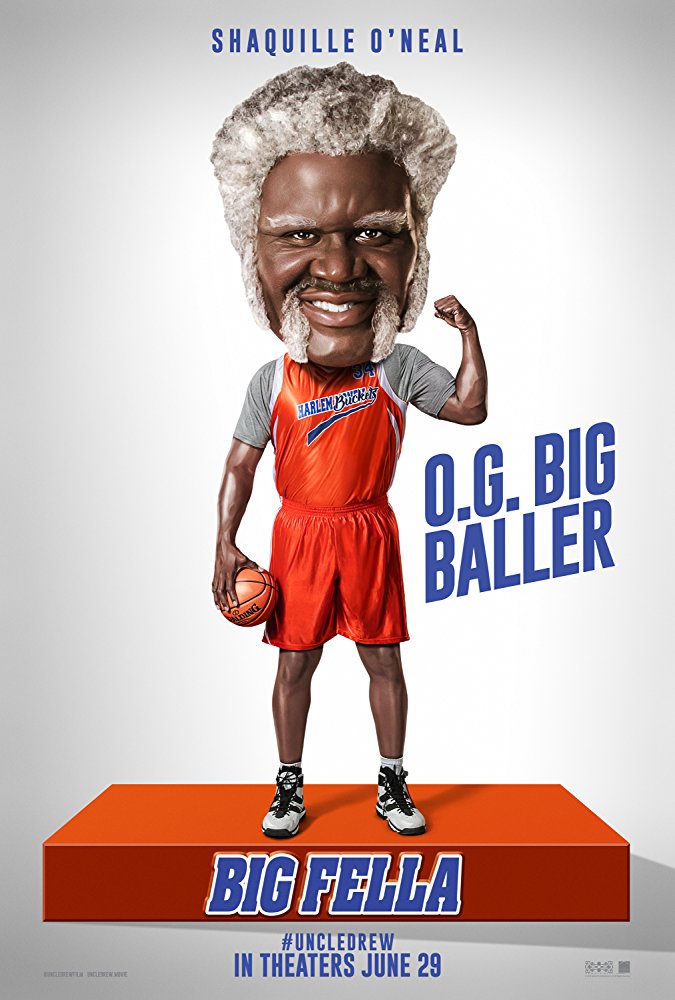 My favorite scene is when Dax, because of a declined credit card at a gas station, makes a $100 bet with a girls’ high school coach. His team is defeated and his guys pitch in to cover it and fill the van’s tank. Dax learns about their hearts and realizes they are a team.
My favorite scene is when Dax, because of a declined credit card at a gas station, makes a $100 bet with a girls’ high school coach. His team is defeated and his guys pitch in to cover it and fill the van’s tank. Dax learns about their hearts and realizes they are a team. Recently, I attended Sight & Sound’s production of Jesus Live in Lancaster, PA. For more than 40 years, Sight & Sound Theaters have produced live entertainment with a purpose – bringing stories from the Bible to the stage.
Recently, I attended Sight & Sound’s production of Jesus Live in Lancaster, PA. For more than 40 years, Sight & Sound Theaters have produced live entertainment with a purpose – bringing stories from the Bible to the stage.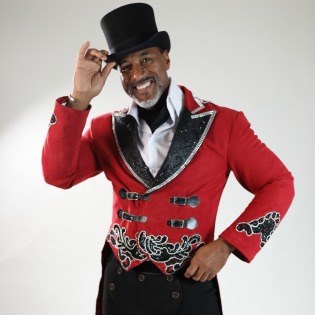 mes the crowd and introduces the various acts from the BIG APPLE CIRCUS including 10-time world record-holding high wire artist Nik Wallenda, award-winning contortionist Elayne Kramer, third-generation animal trainer Jenny Vidbel, and acclaimed acrobats The Anastasini Brothers. World renowned for its one-ring, intimate and artistic style, where no seat is more than 50 feet from the performers, BIG APPLE CIRCUS is passionate about revitalizing the circus for modern-day audiences with unique and astounding human feats, and innovative design and technology. The 40th anniversary season program features the famous seven-person pyramid on the high wire with Nik Wallenda and The Fabulous Wallendas and the daring quadruple somersault attempted on the trapeze by The Flying Tunizianis –
mes the crowd and introduces the various acts from the BIG APPLE CIRCUS including 10-time world record-holding high wire artist Nik Wallenda, award-winning contortionist Elayne Kramer, third-generation animal trainer Jenny Vidbel, and acclaimed acrobats The Anastasini Brothers. World renowned for its one-ring, intimate and artistic style, where no seat is more than 50 feet from the performers, BIG APPLE CIRCUS is passionate about revitalizing the circus for modern-day audiences with unique and astounding human feats, and innovative design and technology. The 40th anniversary season program features the famous seven-person pyramid on the high wire with Nik Wallenda and The Fabulous Wallendas and the daring quadruple somersault attempted on the trapeze by The Flying Tunizianis –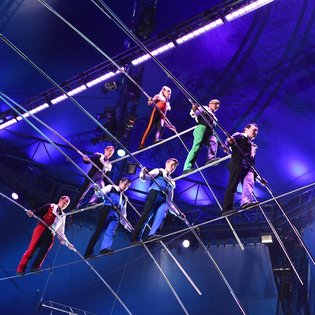 the first time in circus history that both legendary feats are performed under the same big top. The record-setting acts are joined by Dandino & Luciana, a dynamic duo who combine speed, acrobatics and daredevil grace on roller-skates; award-winning contortionist Elayne Kramer; master juggler Gamal Garcia; Jan Damm on the Rola Bola; acclaimed Risley acrobats The Anastasini Brothers (who broke the World Record for Most Flips on November 9, 2017); Ringmaster Ty McFarlan; hilarious clowns Skip & Mr. Joel; and circus trainer & presenter Jenny Vidbel, who performs in the ring with 16 horses and ponies, as well as six rescue dogs. KIDS FIRST! Juror, Juanita L. comments, “I was very surprised and truly enjoyed every minute of it.” See her full review below.
the first time in circus history that both legendary feats are performed under the same big top. The record-setting acts are joined by Dandino & Luciana, a dynamic duo who combine speed, acrobatics and daredevil grace on roller-skates; award-winning contortionist Elayne Kramer; master juggler Gamal Garcia; Jan Damm on the Rola Bola; acclaimed Risley acrobats The Anastasini Brothers (who broke the World Record for Most Flips on November 9, 2017); Ringmaster Ty McFarlan; hilarious clowns Skip & Mr. Joel; and circus trainer & presenter Jenny Vidbel, who performs in the ring with 16 horses and ponies, as well as six rescue dogs. KIDS FIRST! Juror, Juanita L. comments, “I was very surprised and truly enjoyed every minute of it.” See her full review below. day, May 28, 2018 I attended The Bi Apple Circus. I was very surprised and truly enjoyed every minute of it.
day, May 28, 2018 I attended The Bi Apple Circus. I was very surprised and truly enjoyed every minute of it.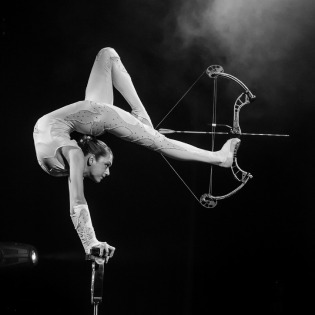 le Circus has epitomized the intimacy and artistry associated with the European one ring circus.
le Circus has epitomized the intimacy and artistry associated with the European one ring circus.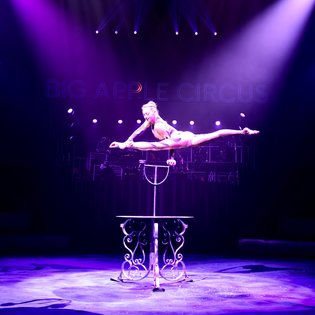 rformers, I don’t know where to begin. My favorites include Ty McFarlan, the Ring Master and the two clowns that interact and have fun with audience members. The daring seven person pyramid on the high wire by Nik Wallenda and The Fabulous Wallendas is breathtaking.
rformers, I don’t know where to begin. My favorites include Ty McFarlan, the Ring Master and the two clowns that interact and have fun with audience members. The daring seven person pyramid on the high wire by Nik Wallenda and The Fabulous Wallendas is breathtaking.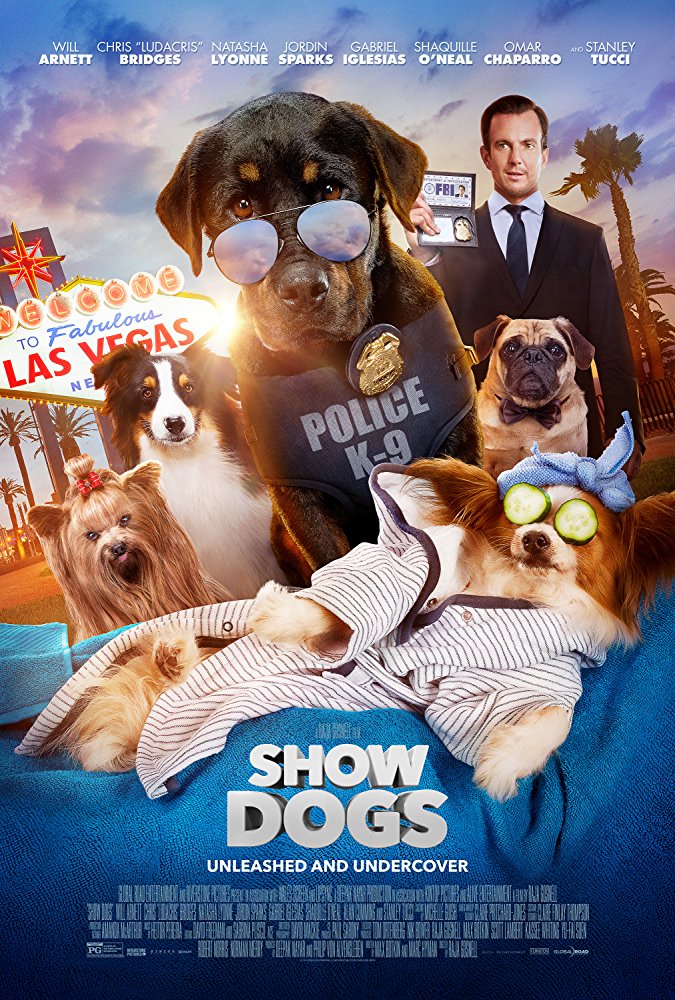 After a failed attempt to recover a stolen baby panda, police dog Max reluctantly teams up with a human FBI agent named Frank. A hot tip leads Max and Frank to Las Vegas for the world’s most exclusive dog show. To find the panda, Max goes under cover as a contestant to get the lowdown from his fellow canines. With help from their new friends, the crime-fighting duo must now foil another kidnapping plot and rescue other valuable animals from a gang of greedy smugglers. KIDS FIRST! Adult Reviewer Juanita L. comments, “I thoroughly enjoyed watching Show Dogs. This is a family friendly film which combines humans and talking canine characters to give one an adventure, action-filled and funny story.” See her full review below.
After a failed attempt to recover a stolen baby panda, police dog Max reluctantly teams up with a human FBI agent named Frank. A hot tip leads Max and Frank to Las Vegas for the world’s most exclusive dog show. To find the panda, Max goes under cover as a contestant to get the lowdown from his fellow canines. With help from their new friends, the crime-fighting duo must now foil another kidnapping plot and rescue other valuable animals from a gang of greedy smugglers. KIDS FIRST! Adult Reviewer Juanita L. comments, “I thoroughly enjoyed watching Show Dogs. This is a family friendly film which combines humans and talking canine characters to give one an adventure, action-filled and funny story.” See her full review below.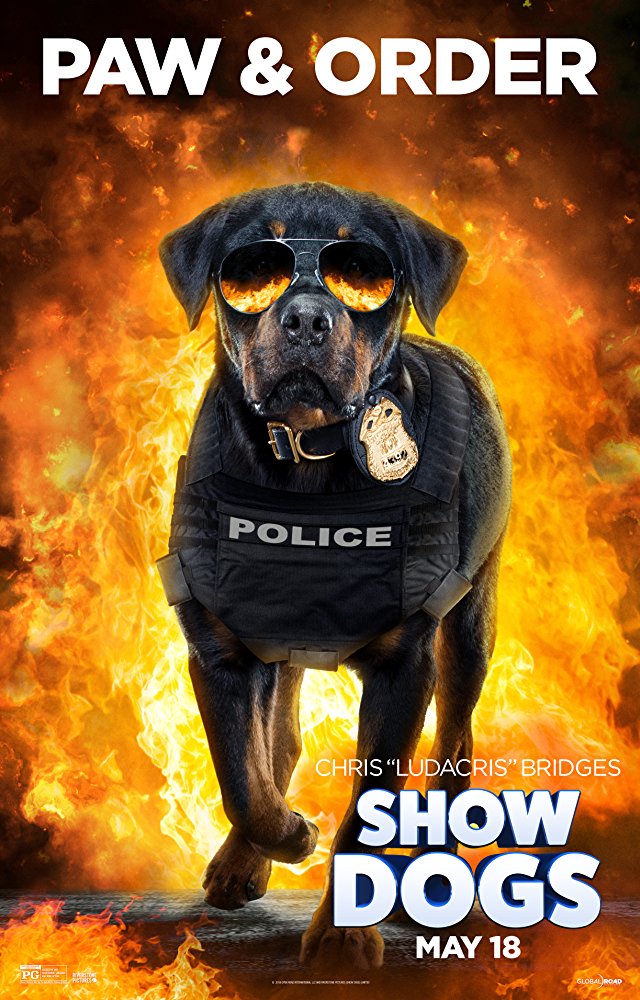 ottweiler NYPD police dog and his human FBI partner Frank (Will Arnett) who set out to investigate the kidnapping of a baby panda by an unknown network of illegal animal traders. They get a tip that the ring of thieves is planning to sell the panda at the prestigious Canini Invitational Dog Show.
ottweiler NYPD police dog and his human FBI partner Frank (Will Arnett) who set out to investigate the kidnapping of a baby panda by an unknown network of illegal animal traders. They get a tip that the ring of thieves is planning to sell the panda at the prestigious Canini Invitational Dog Show. ith the help of a seasoned trainer (Natasha Lyonne) including mud baths, ballet lessons and Brazilian waxing in order to take on this undercover mission to thwart the thieves. Working with Frank, his new human handler, Max discovers his inner show dog. He also learns that trust and working with the help of others can often be more rewarding than working alone. There are great examples of team work with Max’s other canine friends – Sprinkles (
ith the help of a seasoned trainer (Natasha Lyonne) including mud baths, ballet lessons and Brazilian waxing in order to take on this undercover mission to thwart the thieves. Working with Frank, his new human handler, Max discovers his inner show dog. He also learns that trust and working with the help of others can often be more rewarding than working alone. There are great examples of team work with Max’s other canine friends – Sprinkles (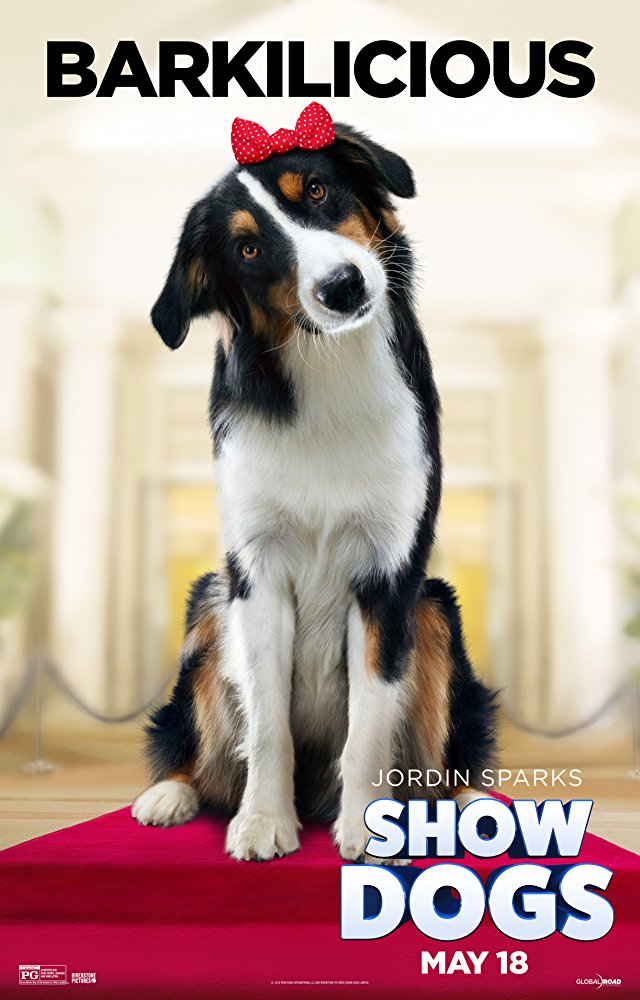 him to go to his happy place, so he will not be bothered by the inspection. When Max goes to his happy place, we see a display of colorful visuals, along with moving music and Max is not bothered by the inspection. I understand that Global Road is re-cutting the film now after complaints from mommy bloggers and others. The new cut of the film will be available by this weekend.
him to go to his happy place, so he will not be bothered by the inspection. When Max goes to his happy place, we see a display of colorful visuals, along with moving music and Max is not bothered by the inspection. I understand that Global Road is re-cutting the film now after complaints from mommy bloggers and others. The new cut of the film will be available by this weekend.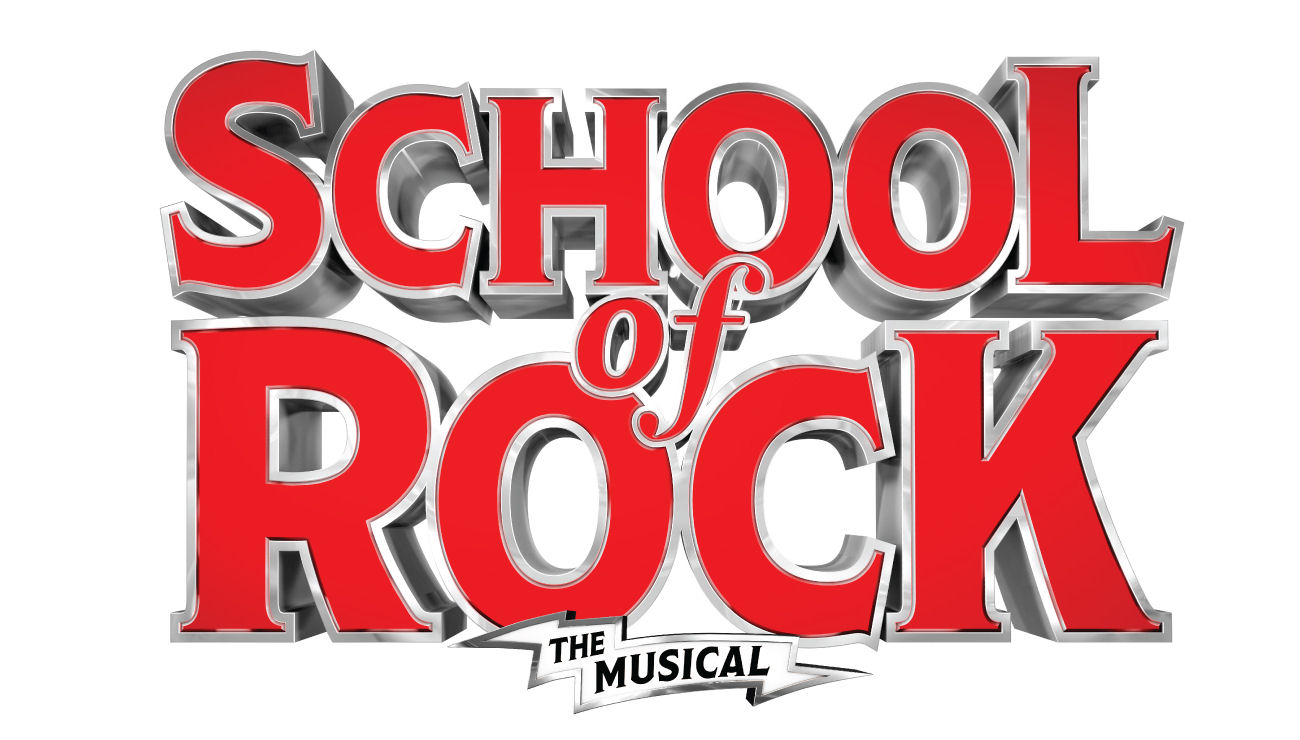 Based on the cult film and with a rocking new score from Andrew Lloyd Webber, School of Rock follows slacker Dewey Finn as he turns a class of straight–A students into an ear-popping, riff-scorching, all-conquering rock band! As they prepare for the Battle of the Bands, can Dewey make them embrace the empowering message of rock? KIDS FIRST! Adult Reviewer Juanita Seon L. comments, “If you want to be entertained, as well as inspired, this is the show for you. The determination of Dewey and his students to uncover their talents and show their parents the importance of listening deliver a wonderful message in this show.” See her full review below.
Based on the cult film and with a rocking new score from Andrew Lloyd Webber, School of Rock follows slacker Dewey Finn as he turns a class of straight–A students into an ear-popping, riff-scorching, all-conquering rock band! As they prepare for the Battle of the Bands, can Dewey make them embrace the empowering message of rock? KIDS FIRST! Adult Reviewer Juanita Seon L. comments, “If you want to be entertained, as well as inspired, this is the show for you. The determination of Dewey and his students to uncover their talents and show their parents the importance of listening deliver a wonderful message in this show.” See her full review below. I enjoyed watching Dewey pretending to be Ned. He is not a licensed teacher and has no clue about how to teach. When he discovers the students at Horace Green are very musically talented, he sees a chance to compete in the Battle of the Bands. He awakens the students to their inner strengths and talent while working very hard to keep the principal, Rosalie (Lexie Dorsett Sharp) from learning the truth about him.
I enjoyed watching Dewey pretending to be Ned. He is not a licensed teacher and has no clue about how to teach. When he discovers the students at Horace Green are very musically talented, he sees a chance to compete in the Battle of the Bands. He awakens the students to their inner strengths and talent while working very hard to keep the principal, Rosalie (Lexie Dorsett Sharp) from learning the truth about him.

